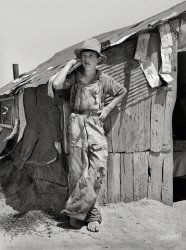
MAY CONTAIN NUTS

Search Shorpy
SHORPY ART

Framed or unframed, desk size to sofa size, printed by us in Arizona and Alabama since 2007. Explore now.
Join and Share
Ad-Free Shorpy
Shorpy is funded by you. Patreon contributors get an ad-free experience.
Learn more.

Recent comments
- Tough Guys
- Lost in Toyland
- And without gloves
- If I were a blindfolded time traveler
- Smoke Consumer Also Cooks
- Oh that stove!
- Possibly still there?
- What?!?
- $100 Reward
- Freeze Frame
- Texas Flyer wanted
- Just a Year Too Soon
- WWII -- Replacing men with women at the railroad crossing.
- Yes, Icing
- You kids drive me nuts!
- NOT An Easy Job
- I wonder
- Just add window boxes
- Icing Platform?
- Indiana Harbor Belt abides
- Freezing haze
- Corrections (for those who care)
- C&NW at Nelson
- Fallen Flags
- A dangerous job made worse
- Water Stop
- Passenger trains have right of way over freights?
- Coal
- Never ceases to amaze me.
- Still chuggin' (in model form)
Member Photos
The Shorpy
Print Emporium
Print Emporium
Search Shorpy
Search results -- 30 results per page
- A Paler Shade of White: 1959
- ... and white Galaxie that year which we made a trip to Arkansas and Missouri in.
The lady's lovely legs make determining the ... Posted by Dave - 02/02/2014 - 9:03pm -
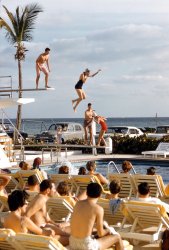
- New Capital: 1910
- Little Rock, Arkansas, circa 1910. "New Capital Hotel, Markham Street." A century later the ... photo was taken it likely had an unimpeded view of the Arkansas River from that second floor balcony.
You can probably still see ... Posted by Dave - 11/20/2015 - 11:08am -
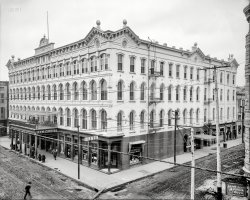
- Slim and Slimmer: 1923
- ... above paragraph I read in the paper where the AA Arkansas Traveler ball club has a pitcher that is 7 ft 1. Not only is he the ... Posted by Dave - 03/29/2014 - 4:45pm -
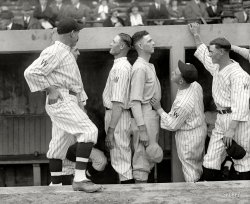
- Big Brother: 1935
- ... Children of rehabilitation client, Maria Plantation, Arkansas. October 1935. View full size. Farm Security Administration ... Posted by Dave - 09/07/2011 - 7:47pm -
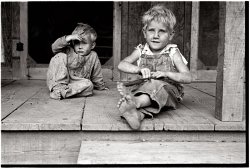
- Progressive Farmer: 1939
- ... 1939. "Housewife reading in living room. Chicot Farms, Arkansas." A peek behind the porch seen in the previous post. 35mm nitrate ... Posted by Dave - 06/24/2012 - 9:50pm -
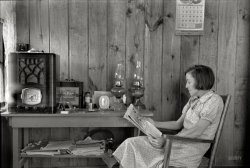
- Ride This Train: 1968
- Johnny Cash in 1968, near the Arkansas farm where he grew up. Going to Memphis, no doubt. From photos by Joel ... Posted by Dave - 05/12/2014 - 10:56pm -
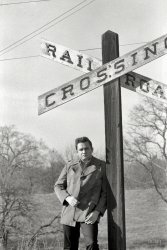
- Railroad Crossing: 1906
- ... 200 feet to the north, and in 1949 by the Memphis & Arkansas highway bridge about the same distance to the south. The three huge ... Posted by Dave - 10/01/2013 - 10:50am -
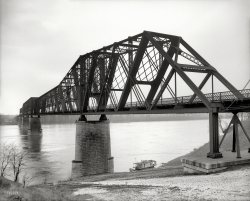
- Working Girl: 1913
- ... events. We also pronounced other places Ell doh-RAY-doh Arkansas, MON-row LOO-zee-anna, and lah-FAY-et County Mississippi.
[Named ... Posted by Dave - 11/25/2012 - 10:47am -
![Working Girl: 1913 November 1913. Kosciusko, Mississippi. "One of the workers (not the youngest) in the Kosciusko cotton mills. The superintendent objected to my photographing them." Photo and caption by Lewis Wickes Hine. View full size.
I was born in this townOctober 1960. Oprah was born there too
Modern Photography almosttterrace is correct that films and plate were fast enough for short fraction of a second exposures in bright sunlight. Still, they were still painfully slow by 21st century standards and required rather wide apertures to accomplish the feat.
Note how shallow the depth of field is in this picture. The "wide" aperture (probably in the f/3.5-4.5 range) and the large format conspire to yield a very shallow depth of field. The architectural images we see from the same time period generally show significant motion blurs when people are walking (ghosts anyone?) since those photographers would have chosen to stop the lens down to a small aperture to achieve deep depth of field and optimum sharpness.
It's pronounced KAH-zee-esk-ohI think the name is Eastern European, but that's how we (Mississippi Delta folk) pronounced it when we ventured up there for sporting events. We also pronounced other places Ell doh-RAY-doh Arkansas, MON-row LOO-zee-anna, and lah-FAY-et County Mississippi.
[Named after Polish patriot and American Revolutionary War hero Tadeusz Kościuszko. - tterrace]
Modern Photography?The girl is walking (moving) and yet there is no ghosting or blur. In other photo movement didn't seem to be photographed as well, with most photos taken of people standing still. Had photographic processes changed by the time this was taken?
[Daylight exposures of a fraction of a second had long been the norm by this time. - tterrace]
Kosciuszko and kielbasaPolish families like mine, at least in the northeast, often dined on Kosciuszko brand mustard with their frequent kielbasa and rye bread or kaiser rolls, great with saurkraut. The spicy brown mustard had a photo of Tadeusz and a blue and gold label. It made your eyes light up and your stomach say "howdy". Yum. It is not available where I live now, (in the southwest) as I believe it may be a regional item. For most of my childhood, that was all I knew about George Washington's right hand man, until we studied the Revolutionary War. Imagine my surprise when I found out he was a real and heroic person and not just a mustard.
(The Gallery, Lewis Hine)](https://www.shorpy.com/files/images/SHORPY_02878u.thumbnail.jpg)
- West Memphis: 1935
- ... 1935. "Street musicians. Blind fiddler. West Memphis, Arkansas." 35mm negative by Ben Shahn for the Farm Security Administration. ... Posted by Dave - 03/29/2008 - 7:01am -
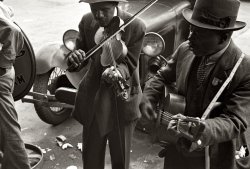
- Low Noon: 1936
- ... heard in today's America.
Dust Bowl We lived in Arkansas on the river across from Oklahoma and even though Texas and Oklahoma ... Posted by Dave - 08/18/2008 - 3:41pm -
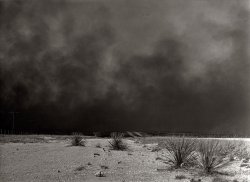
- Nitty Gritty Dirt Band: 1940
- ... might have been "How to keep your soil from ending up in Arkansas and Missouri."
Scatter-Brain Written by Khan Keene, Carl Bean, ... Posted by Dave - 03/02/2010 - 10:35am -
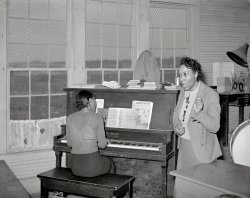
- Beet Train: 1943
- ... north. "Mexican workers recruited and brought to the Arkansas valley, Colorado, Nebraska and Minnesota by the FSA to harvest sugar ... Posted by Dave - 06/11/2008 - 11:18am -
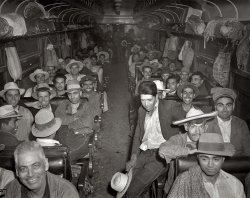
- Bathhouse Row: 1910
- Hot Springs, Arkansas, circa 1910. "Bathhouse Row." At right we have the Horse Shoe, which ... Posted by Dave - 08/15/2012 - 3:07pm -
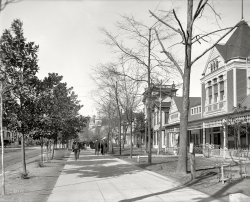
- The Music Man: 1935
- ... October 1935. "Blind street musician. West Memphis, Arkansas." View full size. 35mm nitrate negative by Ben Shahn for the ... Posted by Dave - 05/01/2008 - 12:22am -
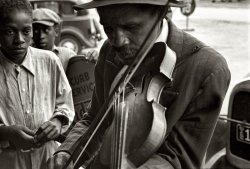
- Hotel Marion: 1908
- Little Rock, Arkansas, circa 1908. "Hotel Marion." Demolished in 1980. 8x10 inch dry plate ... Posted by Dave - 08/14/2012 - 7:25pm -
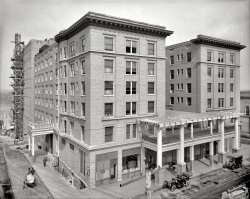
- Street View: 1910
- "West 2nd Street residences." Little Rock, Arkansas, circa 1910. Our second 2nd Street view, this being the first. The ... Posted by Dave - 08/10/2012 - 12:13am -
![Street View: 1910 "West 2nd Street residences." Little Rock, Arkansas, circa 1910. Our second 2nd Street view, this being the first. The era of mounting blocks and hitching posts is drawing to a close. 8x10 glass negative, Detroit Publishing Co. View full size.
Izard & ChesterPossibly this area is between South Izard and South Chester? I went the whole length and this is the only thing I found close. One lonely old house and three Trees old enough to fit the bill.
[There's another one across the street. - Dave]
View Larger Map
View Larger Map
There are a few more further down on the right also, unfortunately things have changed so much it's impossible to identify them as being the houses in the old photo.
It's too bad we can't click on the old photos and "Drive" around like we can now.
The folks 100 years from now will be in for a treat if the Google archive still exists!
Elementary"Horses come by here. Not long ago, Kemosabe."
"Tonto, you're amazing! How do you do it?"
All Gone?I traveled all of West 2nd and some of East 2nd and didn't find those grand homes. I suppose it's not just the old steppingstones and hitching posts that are just a memory.
[The shadows indicate we're looking west. Perhaps toward South Gaines Street, which is at the crest of a hill. - Dave]
(The Gallery, DPC, Kids, Little Rock)](https://www.shorpy.com/files/images/4a23595a.thumbnail.jpg)
- Tuf Nut: 1940
- July 1940. "Arkansas farmer now picking fruit in Berrien County, Michigan." Wearing Tuf-Nut ... Posted by Dave - 11/15/2011 - 2:58pm -
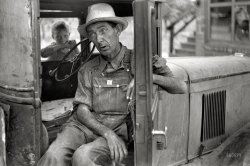
- Hard Times: 1935
- October 1935. "Destitute Ozark resident, Arkansas." View full size. 35mm nitrate negative by Ben Shahn for the ... Posted by Dave - 09/09/2011 - 1:54pm -
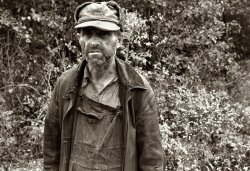
- Old Folks at Home: 1935
- ... region. The white communities such as the Dyess Project in Arkansas were the centers of the Ku Klux Klan.
Here is a website that ... Posted by Dave - 07/05/2009 - 2:04am -
![Old Folks at Home: 1935 October 1935. Brown County, Indiana. Prospective Resettlement Administration clients whose property has been optioned by the government. View full size. 35mm nitrate negative by Theodor Jung for the Farm Security Administration.
Resettlement?Can someone decode what the caption means? Resettlement clients? Property optioned? It sounds like their farm dustbowled up and the Roosevelt government is buying them out, but I'd like the official word... Thanks!
[Wikipedia article on the Resettlement Administration. - Dave]
Brown County INBrown County has the largest Indiana state park and part of the Hoosier National Forest. Brown County has by far the highest concentration of forested land of any of Indiana's 92 counties with nearly 90% coverage and almost no large farms at all. I think these people we relocated to help create these great parks.
http://www.fs.fed.us/r9/hoosier/docs/history/history.htm
Resettlement AdministrationThe resettlement of tens of thousands of people occurred through government action in the 1930s. In some cases it was for projects like the Tennessee Valley Authority where vast areas of bottom lands were flooded and the owners of the land, many of them having families that dated to the Revolutionary War period, were "resettled". In other cases, people lived on what the government determined to be submarginal lands and they were bought out and given the option of settling in a "homestead project" such as the ones developed by the FSA and, earlier, the Resettlement Administration. I don't know the particular history of Brown County, Indiana, where clients were "optioned", but it appears to fit that pattern.
However, in Louisiana at Transylvania Plantation just south of Lake Providence, blacks who had lived on the plantation since the Civil War were evicted by the FSA and white farmers were brought onto the land. The only evidence of this is determined by the photographs made by Russell Lee. There is no reliable history, at this point, that tells us exactly what took place and why (except for the photographic evidence). The result of the removal of hundreds of black tenants, their houses turned over to the new arrivals as well as their churches and community center, was an embittered and angry black population. They formed the nucleus of a particularly militant civil rights group based in Lake Providence. It appears that throughout the south the projects set up by the FSA had very long lasting implications.
The government had determined that FSA projects would be segregated, at the instigation of politicians, which was a profoundly different pattern for sharecroppers in particular who lived in racially mixed arrangements on the land. the result, time and again of this "resettlement" in the south was that whites and blacks were separated and concentrated in isolated communities. the black communities were often the font of civil rights work in their region. The white communities such as the Dyess Project in Arkansas were the centers of the Ku Klux Klan.
Here is a website that outlines some of our research:
http://www.siu.edu/%7ejadams/fsa/
(The Gallery, Great Depression, Rural America, Theodor Jung)](https://www.shorpy.com/files/images/8a14048u.thumbnail.jpg)
- In the Pines: 1905
- Hot Springs, Arkansas, circa 1905. "Roadway through the pines." 8x10 inch dry plate glass ... Posted by Dave - 07/29/2012 - 1:31pm -
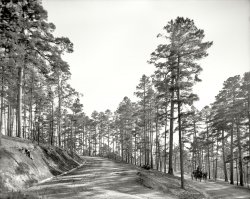
- Ozark Boy: 1935
- ... October 1935. Son of destitute Ozark family on the road in Arkansas. 35mm nitrate negative by Ben Shahn, Farm Security Administration. ... Posted by Dave - 09/08/2011 - 6:11pm -
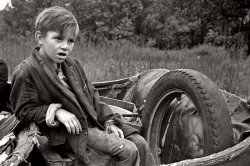
- Whirlpool: 1939
- ... January 1939. "Housewife boiling clothes -- Chicot Farms, Arkansas." Note the primitive nature of this washer -- it doesn't even have a ... But my paternal grandmother, who lived for some years in Arkansas, was not. I had to look twice to make sure this wasn't her. I can't ... Posted by Dave - 06/25/2012 - 12:16pm -
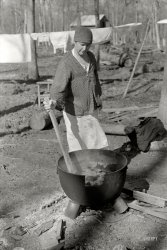
- Fresh Cut: 1939
- ... Canal Point, Florida. Some of them are from Missouri and Arkansas. No water, no light, no sanitary facilities." Photo by Marion Post ... Posted by Dave - 11/20/2012 - 12:09pm -
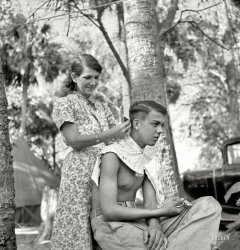
- Family Guy: 1939
- ... migrant agricultural worker and his family encamped on the Arkansas River." Our third look at this grizzled laborer ( One , Two ). ... Posted by Dave - 03/02/2012 - 8:36pm -
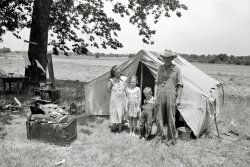
- We Ate the Chickens: 1939
- ... and his wife sitting in front of their shack home on the Arkansas River near Webbers Falls, Oklahoma. This man said that last year he ... Posted by Dave - 03/27/2018 - 12:13am -
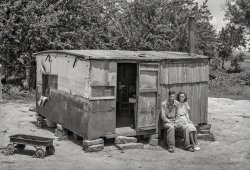
- Near Earle: 1936
- July 1936. "Negro women near Earle, Arkansas." Medium-format nitrate negative by Dorothea Lange for the Farm ... Posted by Dave - 07/15/2012 - 7:28pm -
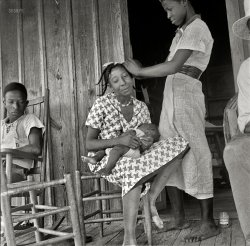
- Portsmouth Wharves: 1907
- ... the Mississippi River. The third, Little Rock, is on the Arkansas River. So I always feel a kinship with the long-gone denizens of ... Posted by Dave - 06/12/2019 - 2:29pm -
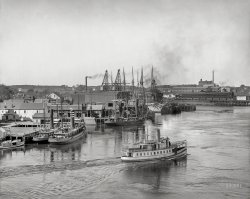
- Pulaski County Courthouse: 1905
- Little Rock, Arkansas, circa 1905. "Pulaski County Court House." 8x10 inch dry plate glass ... Posted by Dave - 07/30/2012 - 4:37pm -
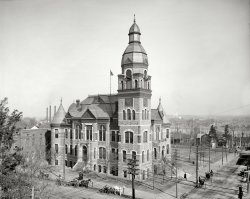
- "Mother at her Desk"
- ... the same thrift store shows Bellefonte Spring, Bellefonte, Arkansas. On the back, in the same handwriting as "Mother at her Desk," it ... back of one as "Kay Knouse, 10 months old, Nevada County, Arkansas, 1925." There are a number of other photos which are also likely from ... Posted by esn36 - 08/05/2009 - 6:32am -
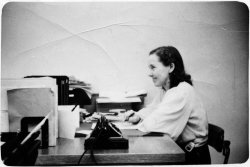
- Wednesday's Child: 1939
- June 1939. "Son of day laborer living in Arkansas River bottom at Webbers Falls, Muskogee County, Oklahoma. The father ... Posted by Dave - 10/24/2018 - 1:10pm -
